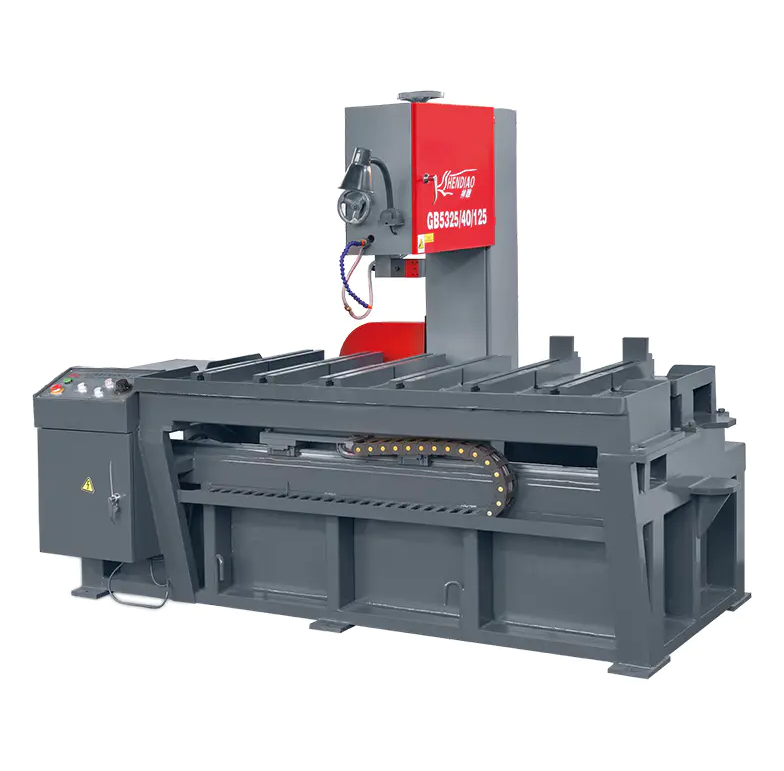The cutting precision of a Vertical Metal Cutting Band Saw Machine is a critical factor that directly influences the quality and efficiency of metalworking projects. This type of machine is designed to perform vertical cuts on various metal materials, ranging from mild steel to harder alloys. Achieving high cutting accuracy depends on several interconnected elements, including the machine’s build quality, blade selection, feed mechanism, and operator skill. Generally, a well-maintained Vertical Metal Cutting Band Saw Machine can deliver precise and clean cuts suitable for both prototyping and production purposes.
One of the primary contributors to cutting precision is the rigidity of the machine’s frame and components. A robust frame minimizes vibrations during operation, which can otherwise lead to deviations in the cut line and rough edges. High-quality machines often incorporate cast iron or steel bases and guides to maintain structural integrity. Additionally, the alignment of the blade guides and the tension applied to the saw blade significantly affect accuracy. Properly aligned guides ensure that the blade remains stable and straight throughout the cut, preventing wobbling or deflection that compromises precision.
The choice of saw blade also plays a pivotal role. Blades with finer teeth and higher tooth per inch (TPI) counts are generally preferred for achieving smoother and more accurate cuts, especially on thin or delicate materials. Conversely, blades with larger teeth may cut faster but can sacrifice some level of precision. Selecting the appropriate blade material and tooth geometry based on the type of metal being cut is essential to balancing cutting speed and accuracy.
Feed rate control is another important aspect. A consistent and controlled feed rate helps maintain uniform pressure on the blade, reducing the chances of blade deflection or overheating, both of which can impair cutting precision. Many modern Vertical Metal Cutting Band Saw Machines are equipped with variable speed controls and automated feeding mechanisms that allow operators to fine-tune the cutting process according to specific material characteristics and thicknesses.
Furthermore, the operator’s expertise and regular maintenance routines cannot be overlooked. Proper setup, including accurate workpiece positioning and secure clamping, ensures that the material does not shift during cutting. Routine blade inspections and replacements prevent dull blades from degrading cut quality. Lubrication and cooling systems integrated into the machine also aid in maintaining consistent cutting conditions, preventing thermal distortion and prolonging blade life.
In summary, the cutting precision of a Vertical Metal Cutting Band Saw Machine is the result of a combination of mechanical design, blade selection, feed control, and operator proficiency. When these factors are optimized, the machine is capable of delivering highly accurate cuts suitable for a variety of metalworking applications. Users seeking superior precision should invest in quality equipment and follow best practices in operation and maintenance to achieve the best results.
Height×Throat depth×Length(mm):150×400×500
Saw Blade Size(mm):3120×34×1.1
Feeding Speed: Three steps
Saw Blade Speed(m/min):25.45.70
Total Power(kw):2.61
Overall Size(mm):1100×1060×1760
